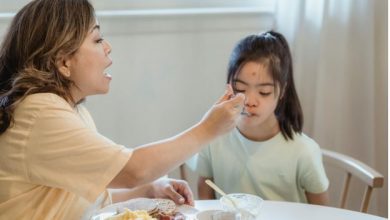AI And Blockchain: How They Work Together

AI And Blockchain: How They Work Together: Artificial intelligence’s (AI) fundamental problem is that it makes decisions that aren’t always transparent, which can cause trust and ethical problems. Blockchain could assist AI in this. Insights into a traditionally centralized and opaque AI may be possible thanks to some important characteristics of blockchain, such as its immutable, transparent digital records and decentralized data storage. EnoughInfo.com

Blockchain technology has the potential to advance AI in the areas of augmenting, automating, and boosting computing capacity in addition to creating trust and strengthening data security and integrity.There are many practical examples of how blockchain and AI could be combined in many businesses. How To Study In Canada From Nigeria(All You Need to know)
What is Blockchain?
One of the key features of blockchain technology is its decentralized nature, which means that it does not rely on a single entity or a central authority to validate transactions or maintain the integrity of the data. Instead, it is maintained by a network of nodes that work together to reach a consensus on the state of the blockchain. This makes blockchains transparent, resilient, and resistant to censorship.
Read Also: How To Make Money With Blockchain Technology
Blockchain technology has the potential to revolutionize various industries, including finance, supply chain management, healthcare, real estate, and more, by providing transparency, security, and efficiency. It is most famously known as the underlying technology behind cryptocurrencies like Bitcoin, but its applications go far beyond digital currencies.
FAQs & Answers On AI And Blockchain: How They Work Together
1, Can blockchain improve the quality of data used by AI?
Yes, blockchain can help improve the quality of data used by AI. Blockchain can provide a transparent and immutable ledger where data can be securely stored and verified. This can help ensure the integrity and authenticity of data, reduce data fraud and manipulation, and provide a trustworthy source of data for training and validation of AI models. By improving the quality of data, blockchain can contribute to the accuracy and reliability of AI-powered applications.
2, How can AI enhance the capabilities of blockchain?
AI can enhance the capabilities of blockchain in several ways. For example, AI algorithms can analyze data on the blockchain to extract insights, identify patterns, and make predictions. AI can also automate decision-making processes in smart contracts, enable natural language processing for smart contract creation and execution, and facilitate automated transactions based on AI-driven triggers. Additionally, AI can help optimize consensus mechanisms, network performance, and security of blockchain networks. How To Study In Canada From Nigeria(All You Need to know)
3, What are the implications of combining machine learning with blockchain technology?
They strengthen both openness and safety when working together. The combination of machine learning and blockchain technology can be extremely beneficial for smaller businesses who are unable to pay significant maintenance expenses. It is possible to set up timers for maintenance on the blockchain, making it possible for everyone to take responsibility for their own responsibilities.
The Problem With Artificial Intelligence
The main benefit of artificial intelligence (AI) is its capacity to stimulate human reasoning and respond fast to massive amounts of varied data. This, however, is also a disadvantage because the complexity of the AI decision-making process is frequently opaque. Deep neural networks are one example of a complex machine learning model in AI that is frequently a black box. Its absence, or lack of “explainability,” is a problem that can affect trust and ethics.
How Blockchain Works
Each transaction is recorded as a “block” of data as it happens; these transactions show the transfer of an asset, whether it be a physical (a product) or intangible (a resource), depending on whether it is tangible or intangible. Who, what, when, where, and even the condition—for instance, the temperature of a food shipment—can all be kept in the data block.
There is a connection between every block and the ones before and following it. These building components come together to establish a data chain whenever an object is transferred between locations or when ownership changes.
Read Also: 100 Romantic Love Messages For Her
To prevent any blocks from changing or a new block from being placed in between two already existing blocks, the blocks are safely connected together. A transaction’s exact time and chronological sequence are verified by the blocks. Linked transactions in a secure chain are known as a blockchain. The blockchain as a whole and the verification of each new block are strengthened by each new block. By virtue of this, the Blockchain gains its crucial strength of immutability and becomes tamper-proof. How Are Multiple Sclerosis And Atherosclerosis Similar
By doing this, you may create a trustworthy ledger of all transactions with the help of other network users, removing the chance of malevolent parties interfering with the data. Let’s examine the various types of blockchain and their use cases to understand how AI and blockchain may collaborate.
Types Of Blockchain
- Public Blockchain: Also known as permissionless blockchains, these are open to anyone who wants to participate in the network. Anyone can join the network, validate transactions, and add new blocks to the chain. Public blockchains are decentralized and transparent, allowing for public verification of transactions and data. Examples of public blockchains include Bitcoin and Ethereum.
- Private Blockchain: Also known as permissioned blockchains, these are only accessible to a select group of authorized participants who have been given permission to join the network. Private blockchains are often used within organizations or consortia where participants have a vested interest in maintaining privacy and control over the network. Access to a private blockchain is restricted, and validation of transactions is typically done by a limited number of trusted nodes. Examples of private blockchains include Hyperledger Fabric and R3 Corda.
- Consortium Blockchain: Also known as federated blockchains, these are a hybrid between public and private blockchains. In a consortium blockchain, a group of pre-selected participants, often with a common interest or industry affiliation, come together to form a network. Consortium blockchains allow for a larger number of participants compared to private blockchains while maintaining a degree of decentralization and control among the members. Examples of consortium blockchains include the Enterprise Ethereum Alliance (EEA) and the Global Shipping Business Network (GSBN).
- Hybrid Blockchain: These are blockchains that combine elements of both public and private blockchains. Hybrid blockchains may have some aspects of public blockchains, such as transparency and decentralization, while also incorporating private or permissioned elements for certain transactions or participants. Hybrid blockchains are designed to provide flexibility in terms of access, permissions, and privacy, depending on the requirements of the use case.
- Multi-chain Blockchain: These are blockchains that consist of multiple interconnected chains, each with its own set of rules and consensus mechanisms. The chains may be designed for different purposes or have different characteristics, and they may interact with each other to enable cross-chain interoperability and data exchange. Examples of multi-chain blockchains include Polkadot and Cosmos.
How do blockchain technology and artificial intelligence work together?
The traditional method of storing vast volumes of data on a blockchain is costly. The cost of keeping bigger data on the Bitcoin Blockchain is prohibitive due to its one-megabyte block size. To solve this issue, data is saved on a decentralized storage medium. The data is hashed, connected to Blockchain blocks, or used internally by the smart contract code in this storage media.
Decentralized AI apps and algorithms may be developed with access to the same trusted and shared data platform that will be used to store your knowledge, records, and choices when blockchain and artificial intelligence technologies are merged. If you keep thorough records of all the AI algorithms before, during, and after the learning and decision-making process, this platform can be useful.
The Benefit Of Combining Blockchain With AI
Research in recent years has shown a link between AI and blockchain. Although historically these technologies have worked separately, things are slowly shifting. We find that the majority of AI applications are migrating towards the big data arena, which is fundamentally due to the enormous volume of data created by AI devices.
Handling data is a critical concern for company, and blockchain and AI together may greatly enhance data management and other data-related concerns. The information will be broken up into smaller chunks and spread around the network in a blockchain. How To Naturally Manage Menopause Symptoms (13 Remedies)
The control of the data is not centralized. To avoid data loss, each computer will keep a complete duplicate of the ledger. If you want an environment for private data that employs AI processing and offers a better user experience, blockchain is a superior choice. The information, for instance, provides a comprehensive picture of everything relevant to the healthcare industry’s health sector. With the use of this massive amount of data, illnesses may be examined, located, identified, and prevented.
Blockchain and AI may have an influence on several industries while also providing flexible ways to acquire privacy, energy, security, scalability, and control over data regulation. AI uses machine learning to enhance the performance, effectiveness, and accuracy of data. Blockchain, on the other hand, looks for energy and electricity to run a network of computers. When blockchain and AI are coupled, the process is smoother and more useful.
Blockchain and artificial intelligence integration
In many aspects, AI and blockchain technology are closely connected. The following is a list of the key integrations: How Does AI Work In Autonomous Vehicles?
Transparent Data Source: To train an AI program, you need a lot of data. Being the most open technology, blockchain is a reliable source of highly tuned data. Because of the nodes’ ability to be tracked, the data source can be quickly validated.
- Autonomous System: The decentralized ledger technology makes sure that the AI application’s activities are not handled by a single server. Decentralization for oversee-free management of AI operations and training is driven by the autonomous system.
- Privacy protection: Cryptographic techniques have improved the security of the network that underpins AI operations and training. When you have a strong privacy mechanism, you can train and supply AI systems since they are competitive and have more complexity.
- Distributed Computing Power: To train and sustain AI, a sizable amount of firepower is required. This role is taken on by blockchain technology, which also makes it easier to resolve. The space requirements, including storage, hardware and software, and maintenance costs, are also included.
- Security: The Blockchain’s smart contracts don’t have enough security. Applications are easily disrupted when there are bugs because of how hard the contract is that the Blockchain is built around. To lessen these weaknesses, AI is used to create smart contracts that are more secure.
- Reading effectiveness: Due to subpar query performance and constrained data storage choices, blockchains typically have restrictions. The Blockchain apps give up reading efficiency to embrace a more write-intensive approach using level DB-a write-intensive DMS.The methods for storing data enable the usage of blockchain and AI. After thorough testing and training, AI is already helping to accelerate the pace of data querying.
- Authenticity: Blockchain’s digital ledger tackles explainable AI’s problems and provides information about the AI framework and the data sources used. As a consequence, you have more faith in the data’s veracity and the AI’s suggestions. In order to increase data security, it mixes Blockchain and AI, offers an audit trail, and uses Blockchain to store and distribute AI modes.
- Automation: Blockchain, AI, and automation will bring new advantages to multi-participant business processes, such as reducing friction and increasing speed and efficiency. Conflict resolution and the selection of the greenest shipping choices are done via blockchain smart contracts that use artificial intelligence (AI) algorithms.
Real-life application of Blockchain and AI
Blockchain technology and artificial intelligence (AI) are two transformative technologies that have the potential to revolutionize various industries when combined. Here are some real-life applications of the synergies between blockchain and AI:
Healthcare:
Blockchain and AI can be used together to securely store and share patient data while leveraging AI algorithms for analysis and decision-making. For example, blockchain can provide a secure and transparent way to store medical records, while AI can analyze these records to identify patterns, predict diseases, and personalize treatment plans.
Financial Services:
Blockchain and AI can be combined to enhance the security, transparency, and efficiency of financial transactions and services. For instance, blockchain can be used for secure and transparent peer-to-peer transactions, while AI can help with fraud detection, credit scoring, and risk assessment. Blockchain can also enable decentralized financial systems (DeFi) powered by AI-based smart contracts for automated financial services.
Supply Chain Management:
Blockchain can provide end-to-end visibility and transparency in supply chains, while AI can help optimize supply chain operations through predictive analytics and machine learning. Together, blockchain and AI can enable traceability, authenticity, and accountability of products, reduce fraud, and optimize supply chain processes for efficiency and sustainability.
Personal Data Privacy:
Blockchain can provide individuals with control over their personal data through decentralized identity management, while AI can analyze and process the data for personalized services. The combination of blockchain and AI can enable individuals to securely manage and share their data, while also benefiting from AI-powered insights and recommendations without sacrificing privacy.
Conclusion
In simple terms, AI and Blockchain may function on their own, but when combined, they reinforce each other and, in practise, have made day-to-day living better for people everywhere.
The blockchain provides the data, while AI provides the intelligence to properly interpret those data, and AI, in turn, feeds off of these data, which ultimately leads to increased trust and confidence in the system. How AI and Nanotechnology Work Together
Recommended;
16 Essential Car Driving Tips for Beginners
15 Ways To Get An Emotionally Unavailable Man To Chase You
Ai: How Ai Affecting The Future Of Medical Science




